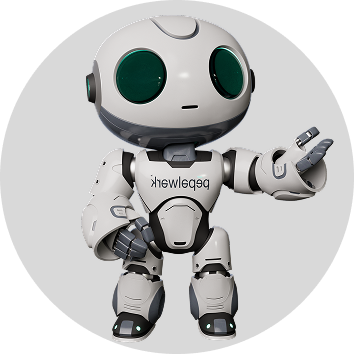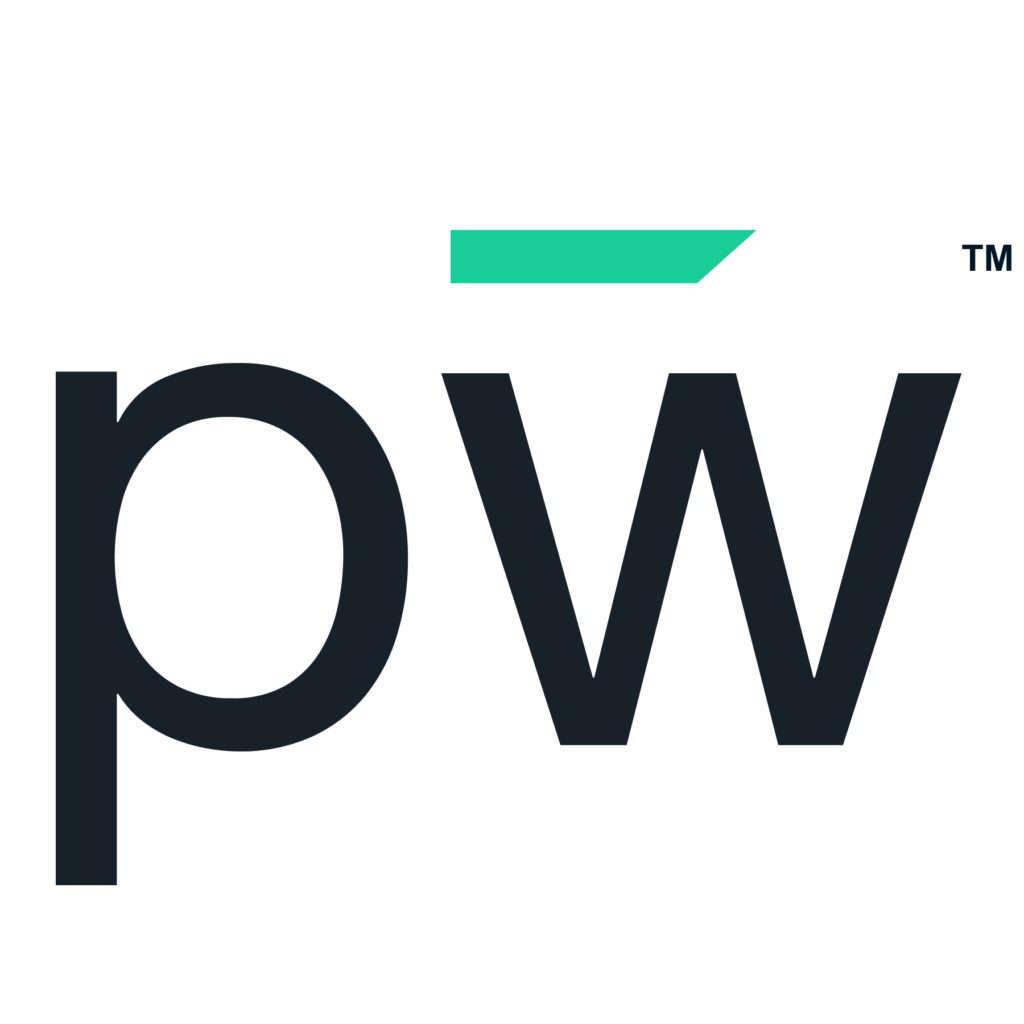Readying your students for their future education and work is a complex initiative. So many factors impact their path and eventual success. Helping students navigate this path is both an inspiration and a challenge.
What it means to be college and career ready has changed dramatically, and students now have access to more options. With more choices and students no longer having to fit into specific boxes or labels, there are many more possibilities of journeys for students to take.
Additionally, the jobs of the future will require a mix of things your students need to be ready. Many positions need candidates with specific skills and attributes in addition to postsecondary education. To help students build 21st-century learning skills, you’ll need to evolve how you support them.
You don’t have to start from scratch. We talked to education thought leaders, reviewed content from experts and looked at the data. The starting point was this question: What's one thing educators can use as a resource to build 21st-century learning skills and better prepare them for career or college readiness?
We’ve compiled answers from the top minds in the industry. Here are the top 11 resources to add to your library.
1. Place project-based learning in the spotlight.
Sara Segar is an experiential educator that founded the Experiential Learning Depot. She provides educators and parents with learning resources and toolkits rooted in personalized, student-led and project-based learning.
“Preparing students for college, careers and life is more essential than ever. What that means for educators is making 21st-century skill-building a priority in the classroom,” she said. “The world is rapidly evolving; therefore, the skills our students need to navigate the world successfully are also changing.
“As an educator, my greatest goal is for students to leave my classroom with the skills to creatively problem-solve, collaborate, critically think, locate information and apply it to their lives. This helps them transition into the next chapter of their lives as passionate, lifelong learners.
“I can rest easy knowing that they may not have memorized the periodic table, but they can manage life’s most trivial and important projects.
“If you could incorporate one strategy today to help students build those essential 21st-century skills, I recommend student-led project-based learning (PBL). Students design and lead their own project-based learning experiences. PBL is authentic and real world, and skill-building is part of the framework.
“If we want our students to manage life’s projects beyond the walls of the classroom, let’s give them agency while they’re still there. Student-led PBL is a fantastic way to do that.”
2. Incorporate CS and STEAM initiatives into core curriculum to develop technological literacy.
Technological literacy is fundamental for education and careers, but helping students become technologically literate is tricky. To alleviate this, Jorge Valenzuela, an educational coach and founder of Lifelong Learning Defined, developed a structure that integrates computer science (CS) and science, technology, engineering, arts and mathematics (STEAM) into the curriculum.
Valenzuela developed a model for engaging in this process, which includes these steps:
Have a model and unpack it.
Create a profile that defines the knowledge and skills every graduate in your state must have. These skills categories are often broad, so you’ll want to get more granular on how they apply to CS and STEAM education.
After you have a profile, you’ll want to unpack it, which involves developing a list of CS and STEAM skills students should demonstrate. Valenzuela recommends programming, creating circuits and 3D fabrication.
Collaborate with colleagues to plan instruction.
You have the profile and list of skills. Now, it’s time to create an action plan with your peers and develop a PBL unit. Working together supports interdisciplinary learning.
Identify and leverage industry partners.
For students to be technologically literate, they must create actual products. Finding and engaging industry partners enables such an initiative to get off the ground.
Create career pathways at school.
When students simultaneously engage with academic content and develop tech literacy, a systemic change occurs, creating career pathways for students and giving educators the time and space to maximize learning aligned to well-developed graduate profiles. Career-themed academies are becoming standard at high schools and represent this framework in action.
Source: “Profile of a Technologically Literate Graduate”
3. Give students agency over their learning.
Student agency is part of the previous initiatives, but let’s look at it more granularly based on observations from Shannon Schinkel, a humanities and drama teacher and assessment thought leader.
Schinkel makes some impactful points on agency. First, she recommends building a community of learners, not a classroom. Learning should be collaborative, and you shouldn’t limit collaboration among your students only to group projects.
Second, Schinkel stresses the importance of a growth mindset. Students with a growth mindset know the value of perseverance and effort. They also learn to set their own goals, which is critical for developing agency.
Third, Schinkel champions empowerment in learning because when students feel empowered, they thrive. Giving students a say in how they learn and the goals they set is instrumental in their performance. Having the support and space to do this is vital to building 21st-century learning skills.
Students take an active role in their learning and future when they control their work-life path. They do this better when they understand how their goals align with their attributes. When they start their journey from a perspective that is their own, they must take the initiative to follow through to make it a reality.
Source: “7 Ways to Build a Learner-Centered Classroom”
4. Adopt a curriculum connected to the real world.
In a recent interview, Dr. Samit Dayal, vice president of education for FranklinCovey India and South Asia, said, “Adopting a connected curriculum with the real world can support student participation, motivation and understanding of academic subjects and prepare them for adult life.”
The real world is constantly changing, and 21st-century learning has to capture what’s next. Rapid economic, social and technological changes are ushering in careers that don’t currently exist to solve problems that have yet to arise. As a result, curriculum needs a solid connection to the real world.
Developing critical thinking, communication, collaboration and problem-solving skills is a necessity. Adopting a connected curriculum to engage and empower students will further their desire to learn and adapt in an ever-changing world.
Source: “21st Century Skills – A Vital Foundation for Student’s Success”
5. Help students discover future goals by transforming them into passionate lifelong learners.
A passion for learning is pivotal for students to continue evolving and enhancing their skills. Learning is more accessible than ever, but you want your students to be more than consumers of education — you want them to be lifelong learners.
It’s a shift that Sheryl Nussbaum-Beach, an educator and the CEO of Powerful Learning Practice LLC, alluded to in a recent interview. She said,
“As a young person today, I can learn anything I want to learn at any time I want to learn it. Therefore, instead of focusing so much of our effort on the content, we really need to focus on helping them learn. We must help students understand how to synthesize and analyze and to create — to think deeply and become passionate learners.”
To facilitate this transformation, you’ll need to realign your approach so that your students’ development is more about discovery and their ability to match future goals with the necessary education. Use technology tools that enable students to define these goals.
Source: “Passion-Based Learning in the 21st Century: An Interview with Sheryl Nussbaum-Beach”
6. Update your lesson plans annually.
In a world of rapid change, revisiting your lesson plans every year is crucial to preparing 21st-century learners. You have concerns about the effort involved, but Amy Hughes has a tried-and-true method you’ll appreciate. Hughes is a lawyer turned educator and author of the blog Teaching in Blue Jeans.
Hughes recommends making relevant updates that reflect changes in the world and challenge students to participate. Here are her tips:
- Review what you already have and note which activities you want to keep.
- Fill the gaps by looking for exercises that support what you’re teaching. Start with Pinterest. If you don’t find anything there, other sources to use include Teachers Pay Teachers, Google and other blogs.
- Search in a way that works for you. If you learn visually, look at the image results from Google or find videos on YouTube.
- Supplement lessons with other pieces you find along the way, such as songs or stories.
Source: “Lesson Planning in the 21st Century”
7. Provide resources to parents and students for informed decision-making on college and finances.
Paying for higher learning is a top concern for students and their parents. For advice on this, Ron Lieber, columnist for The New York Times, is an excellent source.
In his book, “The Price You Pay for College,” Lieber calls paying for college the most confusing and emotional consumer decision. He highlights the disparity in costs for education and how the financial aid system is inconsistent. It’s hard to get straight answers when making such a life-altering assessment. He recommends that students and parents treat paying for college as they would any other consumer purchase. Compare what you get for the money in terms of more than just an education, such as a strong community of alums, guaranteed internships and connected professors.
In the book, Lieber plots a new road map for paying for college with the questions that students, parents and educators didn’t know they needed to ask, starting with, what should you pay for college?
Arm students and parents with resources that offer clarity about funding an education.
8. Prioritize learning how to learn.
Joe Clausi, the Traveling Principal, has spent more than two decades working within various public education institutions, including career and technical schools, charter schools and comprehensive schools.
"Prepare students for the world post-high school by teaching executive functions and transversal competencies every single day. We need to reteach students how to learn and routinely allow 21st-century skills or transversal competencies to guide the learning process,” he said. “Instead of focusing on what we teach and if it's understood, concentrate on how skills are taught. As a result, students can be experts at lifelong learning, no matter the subject.
“The term college and career readiness isn’t accurate. It sounds like students will do one or the other to be successful. We go to college to prepare for a career, so isn’t all education career education? If we thought that way, which seems pretty logical, why aren't we teaching this way?
“The answer may be that all education has been about college readiness. We're trying to reach the vast majority who either don't go to college or don't graduate by fusing career skills into the system as an alternative. That's not going to work. It should be the other way around. Core subject matter courses should be secondary to learning how to learn and how to live a healthy, productive and sustainable life. It shouldn't be one thing educators incorporate; it should revolve around everything.”
9. Emphasize social-emotional learning within your curriculum.
Developing social-emotional skills in students will serve them well in every facet of life. When people have emotional intelligence, they are aware of their own emotions and the emotions of others. As a result, they are strong communicators and collaborators.
Social-emotional learning (SEL) has significant effects, with many students that develop these skills also improving their academic performance and behaviors.
Consistently weaving SEL into your curriculum is key to building 21st-century learning skills. Some valuable elements to foster these skills in the classroom involve:
- Exposing students to social-emotional learning videos that promote engaged learning, visualization, accessibility and conversation.
- Introducing social-emotional games that involve hands-on activities, practicing a new skill in a safe environment and taking the stress out of learning through play.
- Asking social-emotional questions that deepen relationships, help people understand the perspectives of others, develop self-awareness and manage emotions.
Source: “21st-Century Social-Emotional Learning Lesson Plans”
10. Show students where to look without telling them what to see.
As an educator, your role is a guide and mentor, but you want students to form their own opinions and goals. Sara Marye, “Stellar Teacher Podcast” host and literacy specialist, offered this explanation that exemplifies this perfectly;
“Effective teachers show students where to look, but they don’t tell them what to see.”
The way to do this, according to Marye, is to use 21st-century learning’s five components, developed by Rachael Parlett. Those components are collaboration, emphasis on hands-on learning, transparent assessments, reflection and using multimedia and technology. Many educators already use these techniques and continue to hone them to step outside the textbooks. Introducing multimedia and interactive style activities points students in the right direction. According to research, these experiences teach cognitive and psychomotor skills and support retention.
Source: “Providing Your Students with 21st Century Learning Experiences with Rachael Parlett”
11. Expose students to career paths.
Your students gain confidence plotting a career path when they have exposure to different career paths often and early. Andy Chan, vice president of innovation and career development at Wake Forest University, argued this 12 years ago. He continues to have the same position. He said, “Students should be exposed to career paths and begin thinking about translating their education into jobs.”
It’s a simple principle you deliver by leveraging technology that helps students experience a career path, align education with skills and develop work-life goals. Using technology, you reach more students on a personal level and help them tap into what they’re good at and how that relates to in-demand jobs.
Source: “A Conversation with Wake Forest’s Andy Chan”
Build 21st-century learning skills with pepelwerk.
Translating education into jobs begins with students defining their goals. They’ll need your guidance to do so. Without the right tools, it’s challenging to connect with students to help them.
Your students build 21st-century learning skills and “try” career paths with virtual reality technology by partnering with pepelwerk. These unique experiences help them uncover what they want from their working life and the education they need to secure them. That’s the focus of our Real World of Work program. Explore how it works today.










